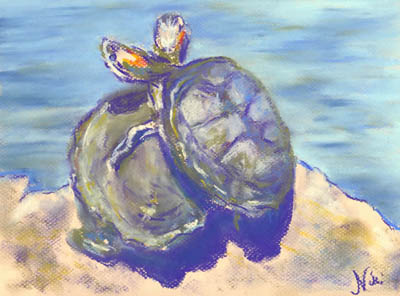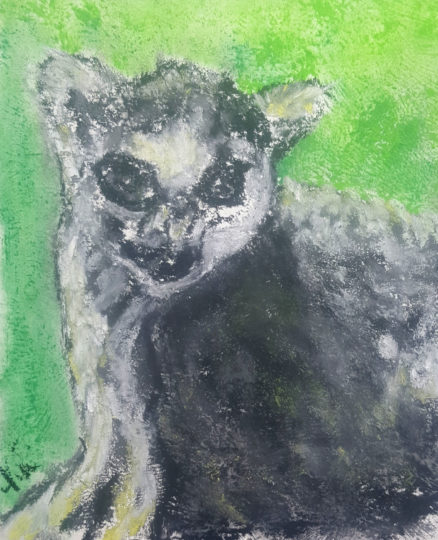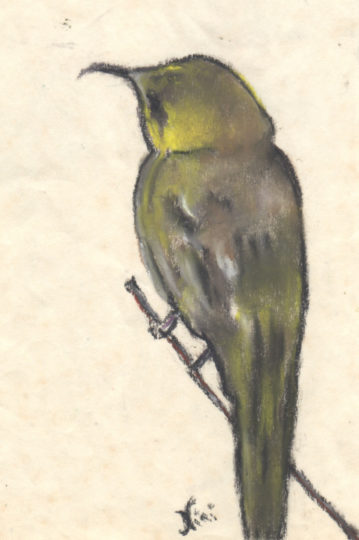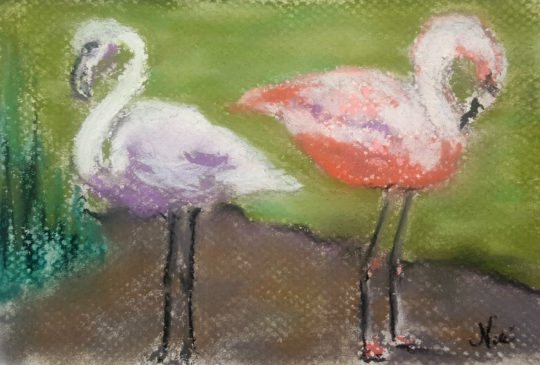
Along the journey of developing a style of painting, one of the most interesting classes I took was called “Wildlife Painting.” Although we only made two actual paintings (one of which had no wildlife in it), I learned a lot of new (well, new to me!) things in that class.
One of the first things I learned was that wildlife painting is serious business. The artist who taught the class was a wildlife painter who would go on trips to track wild animals so he could photograph and sketch them. The photos he would took were so amazing, he could have just published those on their own– instead he used them as his own reference photos for highly detailed paintings. It was a little intimidating to attempt to paint from one of his photos, but he was patient with all of us.
It was in this class that I confirmed that I do not like painting “tight.” The teacher’s paintings were so detailed and realistic, they were almost like photos. Trying to achieve that level of detail is not something I enjoy. There were many other useful experiences in the class– paying attention to details like fur patterns and an animal’s facial structure, and how to paint on a smooth surface like Masonite (very carefully!) I gained an appreciation for Payne’s Gray and red and yellow ocher. At one point, I had messed a painting up so badly the teacher had to sand it down because there was so much paint on the board. This taught me to slow down and paint with more intention.

I also learned that, contrary to what my previous art teacher often opined, people who collect wildlife art really do want to what kind of animal you painted and will tell you if you missed a particular detail. This made me a little reluctant to try wildlife painting on my own– eventually though, I learned to be comfortable with my own style of painting animals.

After I completed the first painting for the class (of a lion), the teacher told me that my painting worked, but he didn’t know why because it lacked details. He then informed me with a grunt that I painted like his ex-wife. I still have this painting out, and every time I see it I think of this conversation and smile. There’s a difference between being defensive about your work and being comfortable with your style– at that point I knew I was more interested in painting in an impressionistic style, which meant more focus on light and shadow, color, and big shapes.
I think the biggest thing I learned from the wildlife painting class was that the world of art is a big place and has plenty of room for everybody. Even the category of wildlife art has room for many interpretations of wildlife– just as botanical art can range from detailed illustration to abstract paintings. If you’re comfortable with your painting style, just apply it to the subjects you paint– some people might not appreciate it, but those who enjoy your style of painting will. My wildlife painting teacher might not have thought much of my loosely-painted lion, but I bet his ex-wife would have totally gotten it.

Click here to see my “Expressive Animals” gallery! It’s mostly cats of course, but they are quite expressive.